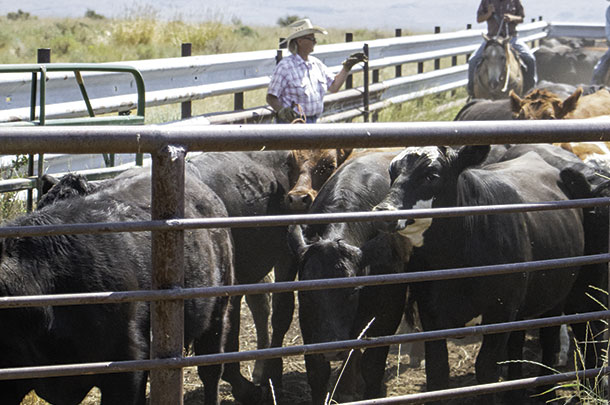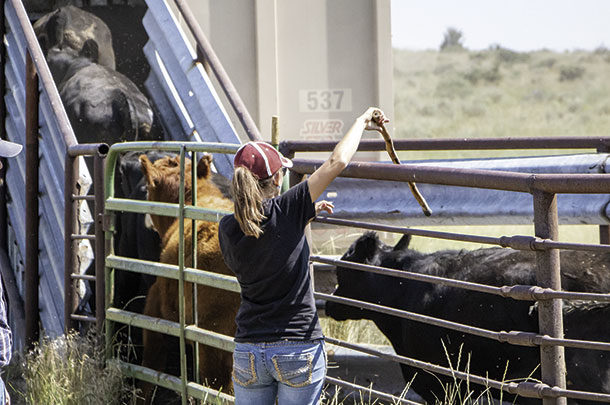The U.S. cattle herd has increasingly become more mobile over time – and without fail, nearly every animal will be transported at some point in its life. To better understand the stress this causes in cattle and the subsequent consequences of that stress, research has been conducted to quantify these impacts on cattle.
This research around transportation stress has provided insight to how cattle respond physiologically and metabolically. Stress in general has negative impacts on live animal performance, reproduction and health. We have pulled together some best practices you can implement and concepts to reduce stress and improve cattle performance.
Safety
The safety of livestock and the people involved are the priority. Complacency around cattle handling and transportation at any point in the process can result in added stress and, even worse, accidents to cattle or people. This stress can have negative production implications leading to decreases in cattle efficiency. Pay attention to animals and people around you while working cattle.
Actions or movements can have unintended consequences. Genetic selection can be a factor associated with safety. There is no “prize cow” worth someone’s life. If you have cattle you cannot safely handle, the best plan is to find the safest option for you and the animal. There are plenty of cattle that are docile and also great producers.
Training
A responsible animal husbandry practice is to train all individuals working with cattle throughout the shipping process. Some people are more naturally suited to work with animals, but everyone should go through training. Implementing a training program on your operation will help mitigate stress in your cattle and serves as a marketing tool promoting our industry ethics. There are plenty of state and national organizations that offer training and certification programs you can take advantage of.
Cattle handling and facility design
Cattle handling and facility design go hand in hand because one directly impacts the functionality of the other. Handling techniques are an important factor in reducing stress in cattle. Operations that handle their cattle more frequently, or are geographically closer to their herd, have an opportunity to expose their cattle more frequently to people and handling.
 How cattle respond to shipping stress will depend on their age, previous nutrition, body condition and shipping cohorts. Staff photo.
How cattle respond to shipping stress will depend on their age, previous nutrition, body condition and shipping cohorts. Staff photo.Any time you can quietly work or move cattle, you create a positive impact on that animal’s future behavior. This not only applies on pasture at weaning but also shipping cattle to a purveyor. Facilities are expensive to design, build and maintain. However, this is a big step in reducing stress and improving safety for cattle and people alike. Evaluate your facilities and see if there are specific places where cattle balk. Try making changes where you can to see if that simplifies working cattle. Remember, facility design applies to the transport vehicle as it becomes part of the facilities in the whole process.
Trailer specifics
Trailer design and maintenance is critical to a safe and stress-reduced transport. Trailer designs determine how many animals should fit on a load. Knowing the weight and animal class when calculating loads will help eliminate crowded trailers that can add a lot of stress to the animal.
The width and height of gates on a trailer can affect the ease of movement both on and off the trailer. It can also cause physical damage to a hip or shoulder, resulting in an injury or carcass damage. Who drives the trailer is just as important as the trailer itself. Loading cattle, drive quality and unloading by experienced operators has also been shown to reduce stress and decrease animal recovery time.
Timely transportation
Knowing when to transport cattle can have a large impact on animal stress and subsequent shrink. In some geographies, cold stress and frostbite can be an issue. If you live in this geography, make sure to have a properly equipped trailer.
Conversely, heat stress is also tough to manage. Heat and humidity inside and outside the trailer is hard to control. Planning cattle handling and shipping with consideration to temperature stress can reduce negative effects seen upon arrival. It’s important to understand limitations in place by transportation departments and licensing agencies that apply to livestock transportation to avoid delays.
Stress implications
How cattle respond to shipping stress will depend on their age, previous nutrition, body condition and shipping cohorts. Animals that need to establish a pecking order on a trailer will be more stressed than cattle being shipped with their penmates. Cattle in better body condition will be less affected by feed deprivation from transportation stress than thinner cattle. Young calves experiencing a long haul will do better if they have room to lie down.
Giving cattle access to familiar feed and providing recognizable water sources, both immediately prior to and after shipping, will help combat shrink as much as possible. Last, be aware of unintended consequences during the breeding season. Shipping cattle shortly after breeding (days five through 42) can potentially increase embryonic mortality, as stress responses can alter or interrupt hormones necessary for maintenance of pregnancy. It’s also a good rule of thumb not to ship cattle that are 60 days or less away from calving.
Transportation stress can vary greatly depending on where your operation fits in the production system. While the above practices are not a comprehensive list, they do provide information on how to minimize stress and animal husbandry practices that will improve cattle comfort, ultimately improving productivity on your operation. Before you get busy this fall moving cattle, consult your nutritionist and veterinarian about specific ways you can minimize stress in your cattle.









